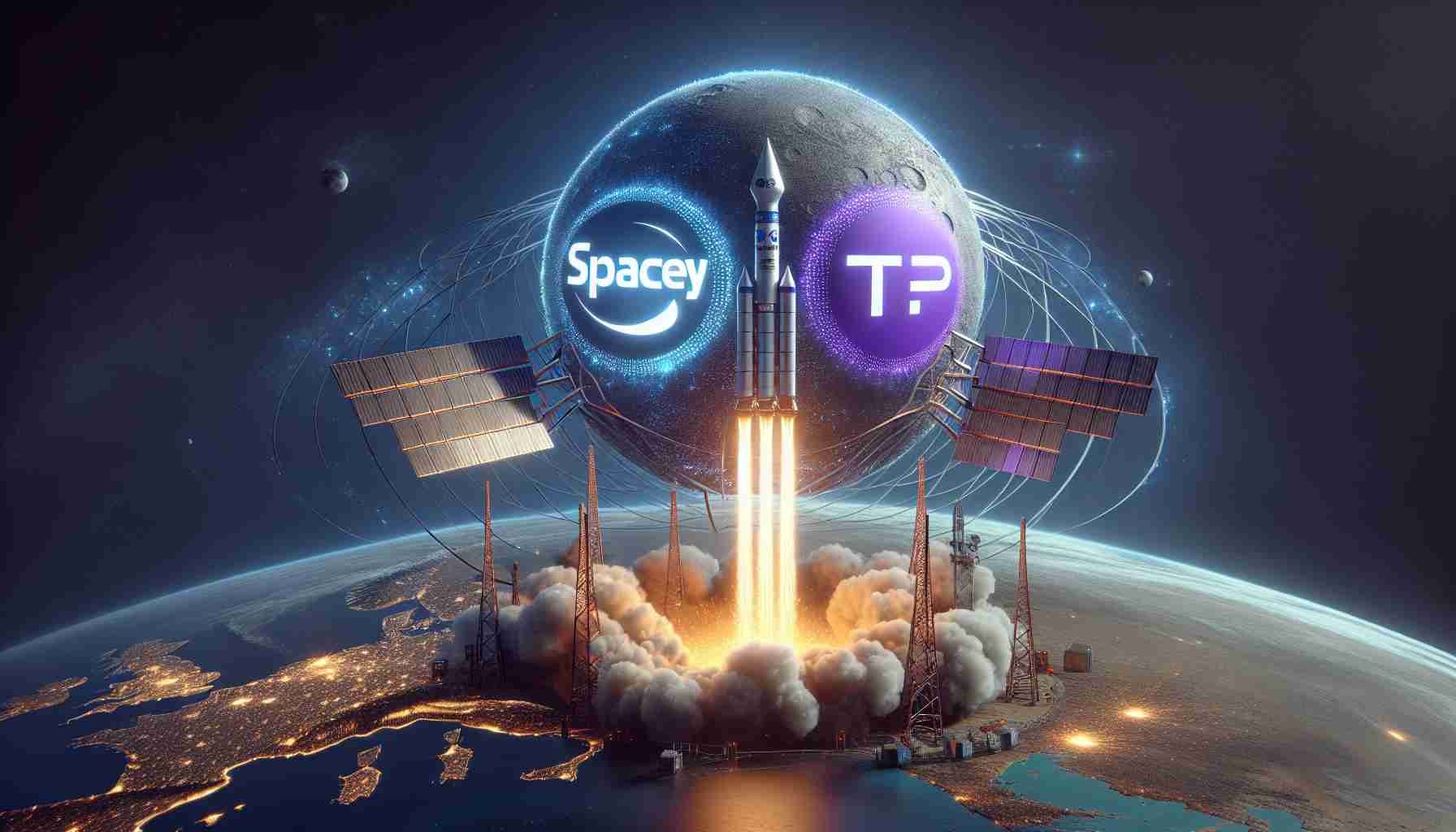- SpaceX launched a Falcon 9 rocket from Cape Canaveral, deploying 21 new Starlink satellites.
- The launch occurred at 1:53 p.m. EST, following another successful launch from California.
- 13 of the satellites will connect directly with T-Mobile phones, enhancing global connectivity.
- The Falcon 9 first stage booster successfully returned to the droneship “Just Read The Instructions.”
- This marks the booster’s 18th successful launch and return mission.
- The launch was SpaceX’s 19th of the year, contributing to around 6,990 Starlink satellites in orbit.
- T-Mobile’s Starlink service is approaching public release, blurring lines between terrestrial and space connectivity.
A symphony of engineering unfolded in the skies over Florida as a SpaceX Falcon 9 rocket soared from Cape Canaveral on a clear Tuesday afternoon, clutching 21 new Starlink satellites in its powerful grip. The clock chimed precisely 1:53 p.m. EST when the thunderous launch painted the sky with its plume. It was a masterstroke of timing, coming just after another successful Starlink launch from the California coast, underscoring SpaceX’s relentless drive to blanket the globe with high-speed internet.
Within this latest ballet of technology, 13 satellites harbored a special promise—ushering in a new era of connectivity by linking directly with T-Mobile phones. This marks a significant stride as the Starlink network makes good on its ambitious aim to bring internet access to the most remote corners of the Earth, ensuring no one remains in digital darkness.
As if scripted for the theater, the familiar sight of the Falcon 9 booster returning to Earth captivated onlookers. Gently, it descended upon the Atlantic’s horizon to alight on the droneship “Just Read The Instructions,” achieving its 18th cosmic round-trip. This steadfast first stage, known for its resilience and storied missions, etched another chapter in its illustrious history.
SpaceX, with this launch marking its 19th for the year, continues to weave an invisible web in the night sky. Around 6,990 Starlink satellites now orbit above, a testament to the celestial craftsmanship of our times. As T-Mobile’s Starlink service gears up for its public unveiling, one thing is clear: the boundary between terrestrial and extraterrestrial connectivity is becoming gloriously blurred. This marvel of technological symbiosis promises a connected future where the sky is not the limit—it’s just the beginning.
How SpaceX’s Starlink Sprints Ahead of Rivals: The Future of Internet Connectivity and Market Impact
Expanding Starlink’s Reach: Ushering New Connectivity Revolution
SpaceX’s recent successful launch of another Falcon 9 rocket carrying 21 Starlink satellites marks a pivotal step in the company’s mission to provide high-speed internet globally. This launch is particularly noteworthy because 13 of these satellites are designed to connect directly with T-Mobile phones, expanding the Starlink network’s capabilities and potential use cases.
Key Features and Innovations
1. Direct Mobile Connectivity: With satellites now capable of linking directly with mobile phones, Starlink aims to eliminate dead zones worldwide. This represents a significant innovation, particularly for remote areas lacking traditional infrastructure.
2. Reusable Rocket Technology: The Falcon 9’s ability to return and land safely on droneships like “Just Read The Instructions” showcases SpaceX’s prowess in reuse, reducing costs and resource wastage.
3. Scalability of the Network: Starlink now boasts around 6,990 satellites in orbit. This growing constellation is designed to offer comprehensive, low-latency, high-speed internet coverage across the globe.
Pros and Cons
Pros:
– Global Coverage: Enables access in remote and underserved regions.
– Fast Deployment: Speedy setup compared to terrestrial networks.
– Direct Mobile Integration: Enhances mobile networks by eliminating dead zones.
Cons:
– Environmental Concerns: Increasing satellite numbers include risks to space traffic and pollution.
– Regulatory Challenges: Must navigate complex international telecommunications regulations.
– Subscription Costs: High cost relative to some terrestrial services may hinder adoption.
Market Analysis and Comparisons
The satellite internet industry is burgeoning, with competitors like OneWeb, Amazon’s Project Kuiper, and others. Yet, SpaceX, with its accelerated launch schedule and integration with terrestrial networks, holds a competitive edge. Analysts predict substantial growth in the satellite internet market, with potential revenue streams from direct mobile integration and international expansion.
Pricing and Subscription Insights
Current pricing for Starlink services includes the hardware kit fee and a monthly subscription, typically higher than conventional ISPs. However, as the network expands and scales, costs may decrease, fostering broader accessibility.
Blockchain and Security Aspects
Starlink’s evolution into mobile and global connectivity raises security questions. Encryption and data protection mechanisms will be pivotal, especially with direct smartphone connections. SpaceX must ensure robust cybersecurity protocols to safeguard data between satellite links and end devices.
Sustainability and Environmental Impact
With thousands of satellites already in orbit, the sustainability of satellite networks is crucial. SpaceX is investing in systems to minimize orbital debris and ensure responsible deorbiting of defunct satellites.
Future Predictions
As Starlink services roll out with enhanced capabilities, such as T-Mobile partnerships, we anticipate a transformative impact on remote work, education, and emergency connectivity. This could redefine internet accessibility norms, especially in developing regions.
Suggested Related Links
For more information on SpaceX and Starlink, visit the official website: [SpaceX](https://www.spacex.com)
Explore the potential connectivity benefits with T-Mobile: [T-Mobile](https://www.t-mobile.com)
In conclusion, SpaceX’s latest Starlink launch signifies not merely an advance in satellite technology but a paradigm shift in how and where we connect. The implications for internet accessibility, market dynamics, and technological innovation are profound.
